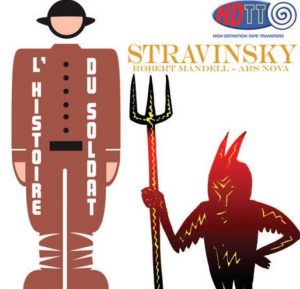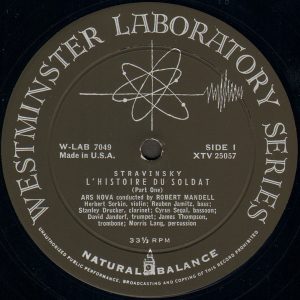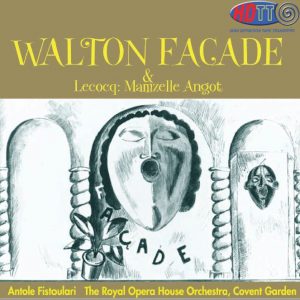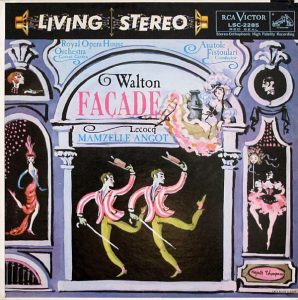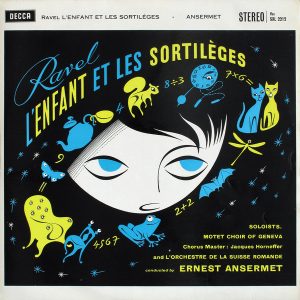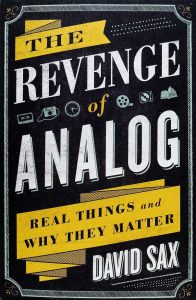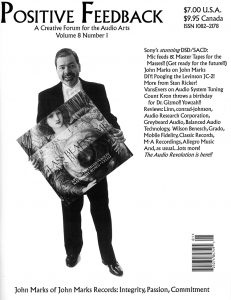When Dr. David, Ye Olde Editor at PF, invited me to write some music reviews with a principal focus on DXD and DSD256, I don't think he expected I might start with these particular albums from High Definition Tape Transfers. But, honestly, I just have to start with these wonderful recordings from the earliest days of the stereo. They are simply outstanding in these excellent DSD256 and DXD transfers.
One might pass this off as just an homage to the golden era, but it's not just that. It is genuinely about recordings that any self-respecting audiophile should have in her or his music library. Period. Come dive in with me…
Stravinsky: L'Histoire du soldat (The soldier's tale) - Robert Mandell, Ars Nova. HDTT [DSD256]
When Stravinsky wrote this music in 1918, he intended it as a theatrical work to be performed by a small instrumental ensemble with spoken dialogue (the tale) and/or dance. The story tells of a soldier who trades his fiddle to the devil for a book that can predict the future. With this book, the soldier dreams of making his fortune. But, as you may guess, all does not turn out well.
There are many performances with the spoken dialogue, including speaking parts for the soldier and the devil. Perhaps my favorite over the years has been the performance conducted by Igor Markevitch for Philips in 1962 with Jean Cocteau narrating and Peter Ustinov as the Devil. Other performances include Sir John Gielgud, Boris Karloff, Ian McKellen, Sting, Vanessa Redgrave, Jeremy Irons... . There's quite a long list. But I typically prefer to listen to the performances without words and just let the music tell the tale.
Originally scored for seven instruments, that's what we get here in this lively, jazzy, and sometimes raucous performance without dialogue. The seven musicians comprising Ars Nova play with joyful, propulsive abandonment. The playing is by turns high energy, raucous, sinister, and sly expression. The musicians wonderfully capture the full expression of the story in a thirty minute instrumental suite.
What separates this recording from so many others is its reach-out-and-touch-it realism. The sound has an immediacy and transparency that we don't often get to hear. You know this is going to be a sonic treat just listening to the first six seconds concluding in that shivering orchestral bass drum thwack. The sonic treats just continue from there.
The natural acoustic of the hall is apparent, but this is no laid back mid-hall recording. The instruments are immediate, tactile, and very much present; they are about as real to my ear as real gets. But they are not "close-miked," and there is no multi-miking. My ears tell me that this is a minimally miked recording in an excellent hall (Carnegie Hall before the renovation, oh yes!).
Every instrument is precisely located in space, the imaging is rock solid, the highs are extended and pure, and the bass goes down through the floor. Most importantly to my listening priorities is that the timbre of the instruments captured by this recording are spot on. All of the instruments are captured true to life, with the violin, trumpet, and percussion being particular joys.
And please note carefully… this performance was recorded in Carnegie Recital Hall on May 25, 1956. Yes, 1956. HDTT transferred this recording from a Westminster Sonotape 2-track directly to DSD256 without PCM processing; what HDTT identifies as a "Pure DSD" transfer. This is one of their Redux Series of previously released transfers now remastered with their latest equipment in higher resolutions with substantially better sonics.
Original Westminster cover and Side 1 label for the mono LP release, courtesy of Discogs. Note that this LP is from Westminster's Laboratory Series which they considered to be their highest quality recordings and technically superior to other brands. As a Westminster Natural Balance recording, it comes from a single microphone recording technique (similar to Mercury Records' Living Presence series). (ref: Wikipedia) Yep, still sounds great today.
John J. Puccio wrote a lengthy review of the initial HQCD incarnation of this HDTT recording some years ago in his Classical Candor blog, which you can read here in full. One comment he made in his review that I've enjoyed and thoroughly agree with was:
"Not to have it [this recording] in your collection is reason enough to turn in your audiophile badge and go back to music listening on earbuds."
And now we have this music reissued by HDTT via their Redux Series in a direct-to-DSD256 transfer. Life is good.
I'm not asking you to trust my recommendation, I'm just saying that if you do ever hear it, you will regret that you didn't add it to your music library long ago. Just get it now so you won't beat yourself up later.
The next two recordings
The next two recordings present a different recording philosophy—record the full orchestral sound from a mid-hall perspective (12th row or so) while capturing the ambiance of the venue, the natural timbre and detail of the instruments, and the realistic reflection of artists performing in a natural acoustic environment. They don't have that in-your-face sonic impact with the transparency, immediacy and neutrality of the Ars Nova L'histoire du soldat. However, their superb engineering captures the natural timber of the instruments and the natural acoustic space in which the orchestra and, in the case of the Ravel, the massed choruses and soloists all perform. They present a different audio truth.
Both recordings have some of that 1950s-1960s warm tube sound which you may love or you may hate (and more so than the Ars Nova L'histoire du soldat). To me, this early tube sound reflects the golden era of analog recording, while the minimalist microphone technique is pure early Decca recording team excellence. The HDTT transfers direct to DSD256 sound as if they are perfectly capturing what is available on these tapes.
I emphasize this so that you will not be surprised if you listen to all three recordings. The differences are like listening to Mercury recordings and then Decca recordings. Both superb, but different. Vive la différence!
William Walton: Façade Suite - Anatole Fistoulari, The Royal Opera House Orchestra, Covent Garden. HDTT [DXD]
The Façade Suite heard here is the purely orchestral version of Walton's original "Façade - An Entertainment" in which the poems of Edith Sitwell are recited over the instrumental accompaniment by Walton, written in 1922 with the first public performance in 1923. That first performance received the usual laudatory commendations for new music that challenges the ear: "relentless cacophony" wrote The Manchester Guardian; the musicians hated it; the clarinetist asked the composer, "Mr. Walton, has a clarinet player ever done you an injury?" (see Wikipedia). But all great music was once new, and the same applies to this work.
No poetry is being recited in this performance recorded by Decca for RCA on September 10-11 1957 at Watford Town Hall. I mention Decca's involvement because many (most?) of the great RCA recordings were actually made by Decca under contract to RCA. Decca had the recording talent and the UK recording hall venues, RCA had the money.
Oh, did you catch the date above? Yes, 1957.
Here's the original stereo LP cover, in case the visual image brings up a recollection for you:
Original stereo RCA cover and Side 1 label, courtesy of Discogs.
And what a wonderful recording Decca recording engineer Ken Cross, producer Michael Williamson and the acoustics of the Watford Town Hall have given us. This recording is simply as good as any Decca or RCA there is. Don't hesitate to give the volume a bit of a boost over what you might have used with the Ars Nova recording; you'll be rewarded. There is excellent high end extension and superb transient snap, the sound is very quick with occasionally extraordinary impact. The timbre of the instruments is spot on, easily rewarding the ear by one's ability to differentiate the interweaving and contrasting lines among the various woodwind instruments. Brass, woodwinds and percussion, which carry the much of the musical load, are particularly well recorded. Imaging is stable and rock solid as I listen via headphones, while soundstage depth is apparent (something I was not expecting through headphones!).
Oh, and the music…
Walton's music in the Façade Suite is sparkling, full of fun—with a wink and sly grin. It is full of whimsical references, musical parodies if you will, that pass by in such quick succession you have to stay alert to catch them. Just listen to the "Swiss Yodelling Song" or "Noche Espagnole" passages to catch my drift.
Lecocq's Mam'zelle Angot, which accompanies the Walton on this album, is delicate and very pretty light ballet music of the late nineteenth century. It is enjoyable, but lacks the musical depth and complexity of the Walton. Enjoy it for a nice diverting bit of fluffy pastry—pleasant to the taste sensors, not too filling. Buy the album for the Walton.
I highly recommend this wonderful recording!
Ravel: L'enfant et les sortilèges - Ernst Ansermet, l'Orchestre de la Suisse Romande. HDTT [DSD256]
This music by Ravel, The Child and the Spells: A Lyric Fantasy in Two Parts, has a place in my heart simply because it is so delightfully quirky. Written from 1917 to 1925, with a libretto by Collette, it is Ravel's second opera but it sounds like no other opera. Using a large orchestra, a mixed chorus of adults, a chorus of children and eight soloists, the work is full of inventive melody.
The story is about a rude child who, after a destructive tantrum, is reprimanded by objects in his room. The child is surprised to find that the furniture and decorations begin to talk. Animals he'd harmed shun him and then attack him. A squirrel is hurt in a melee, causing the fighting to stop. The child bandages the squirrel's injury, which kindness prompts a change of heart toward the child among the animals. All return home to the cry of "Maman" sung by the animals in praise of the child, with the child crying out this greeting again in the very last bar of the score. (Wikipedia)
Original Decca cover for the stereo LP, courtesy of Discogs.
So how does this sound? Marvelous.
This Pure DSD transfer from a 15ips two track tape by HDTT sounds fresh, alive, and dynamic. The reproduction of voice is outstanding and articulate for both the individual singers and the large choruses. The large orchestra has impact and vitality, but plays a supporting role to the chorus versus being the primary focus. Nonetheless, there is tremendous impact and variety to the instruments of the orchestra in this supporting role. Piano, harp, woodwinds, percussion, brass, and strings all play essential and prominent roles in creating the music that carries us along in this tale. From the deep growls of the contrabassoon to the delicate high extension of the xylophone and celesta, this is a sonic roller coaster of delectable delights. Just the percussion calls for: timpani, xylophone, bass drum, triangle, whip, cymbals, tam-tam, rachet, cheese grater (scraped with a triangle beater), wood block, wind machine, crotales, and snare drum (HERE). Wind machine? Oh, yes!
The recording is a real test of the resolution, accuracy, and transparency of one's system. To clearly resolve the interplay of the instruments with each other and with the vocalists presents a real challenge; it takes quite a bit transparency in one's own system to cleanly articulate all that is going.
And I've now been really messed up by this recording… spoiled, perhaps. I listen to headphones and have used an optional 12 foot extension cord to allow easy movement around my listening room. I've never wanted to remove that extension cord because I never wanted to be spoiled by how things might sound without it. Well, for this album I did. Now I don't think I will ever want to go back to using the extension. So much for convenience; hurrah for the sonic superiority of 6 feet of cord! And hurrah for a great recording that deserves the best I can do with my system to fully enjoy it.
Conclusion Regarding This Trio of Recordings
Don't let the age of these recordings fool you. Despite their age, the sonics are extremely good; just give yourself a moment to become attuned to the slight additional warm glow of the tubes in the equipment of the day and you will be richly rewarded.
I treasure the wonderful performances and recordings in these excellent hi res transfers by HDTT. I recommend them all to you. But if you can choose only one, then I recommend you first try the Stravinsky L'histoire du soldat by Ars Nova. It will become a recording you queue up to demonstrate just how good your audio system sounds; you may even come to like the music as much as I do.
Images are the courtesy of the respective labels and distributors, except as noted.





